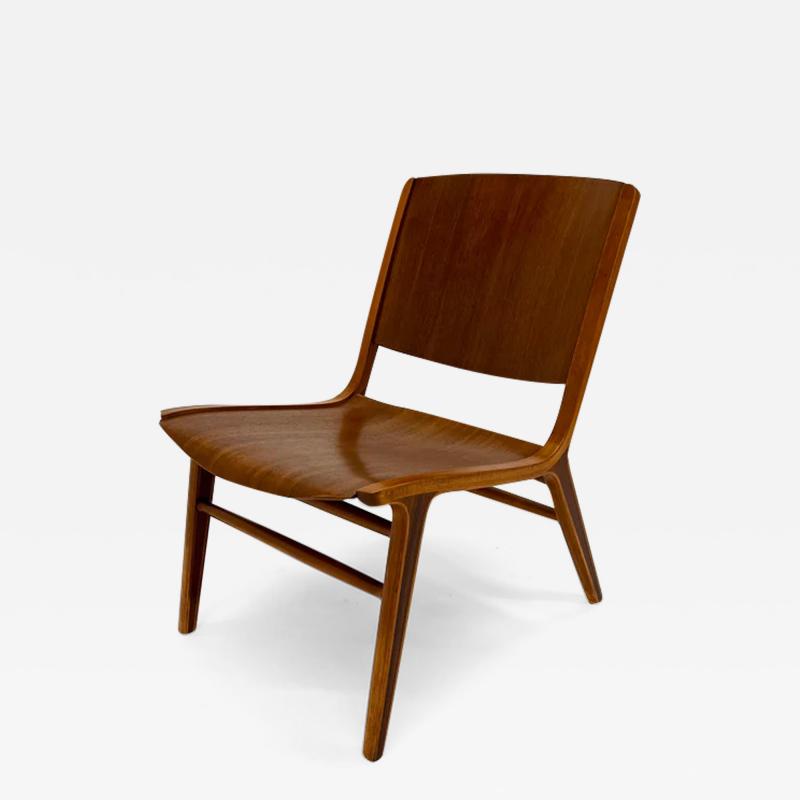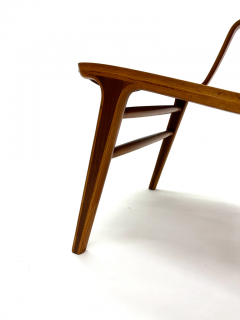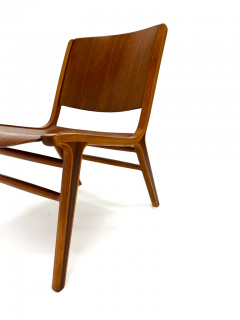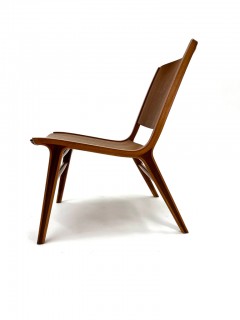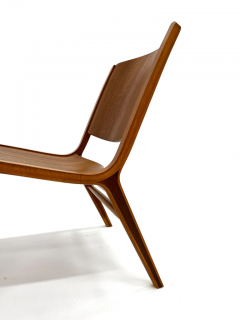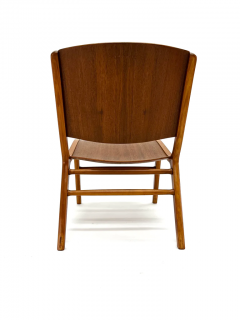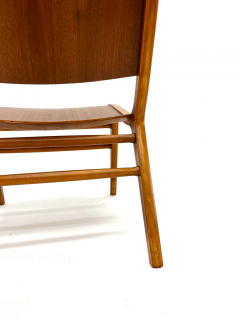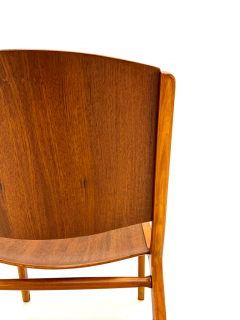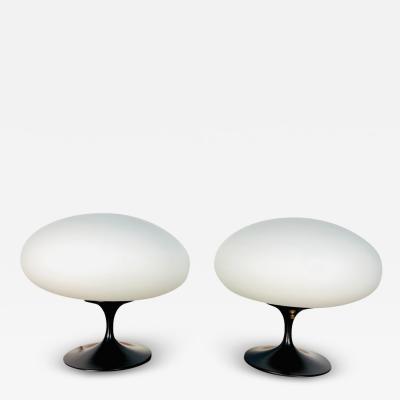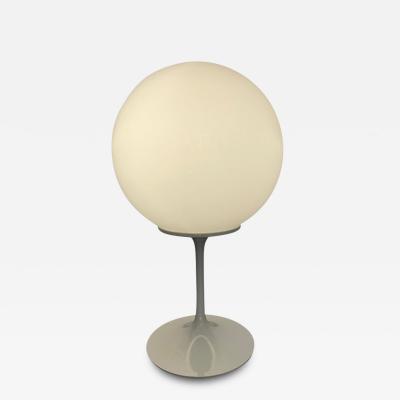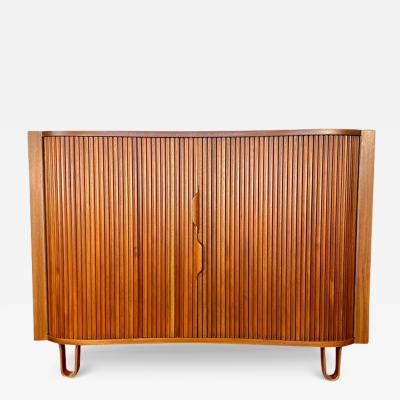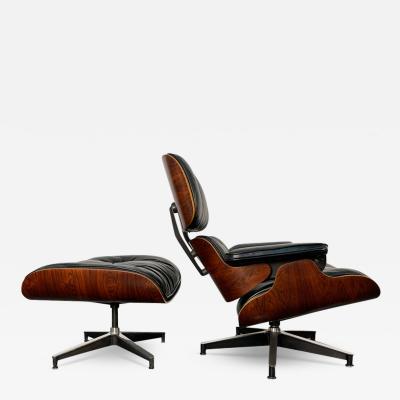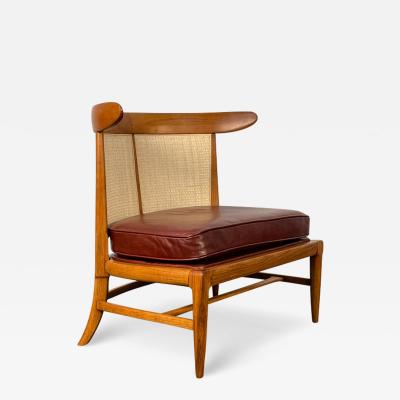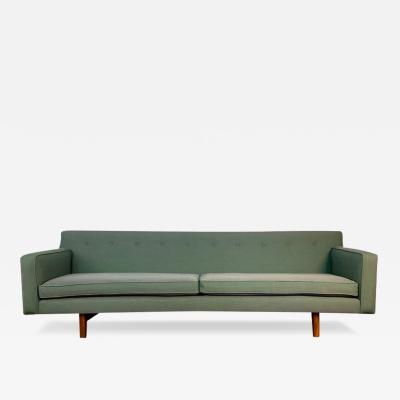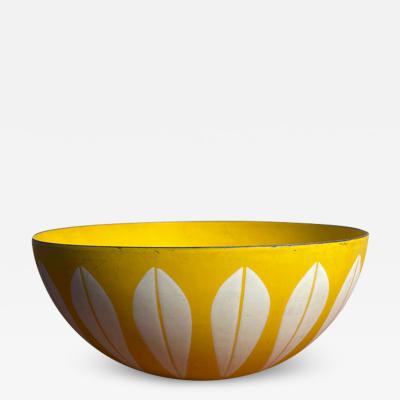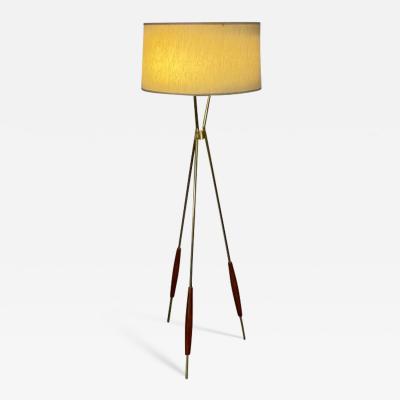Ax Chair by Peter Hvidt & Orla Mølgaard Nielsen
-
Description
Peter Hvidt and Orla Molgaard Mahogany important and famous Ax chair.
The chair features a molded curved back rest and expressive contrasting wood detail. Each layer in the frame was painstakingly applied by hand with the utmost precision to fit teak inserts at each leg. Four strechers further support the chair, two at the front and back.
Condition: Has been fully restored to excellent condition and is structurally sound.
Dimensions: 29.5”H x 20”W
Seat Height: 16”H
Seat Depth: 19.5”D
About the Designer: Peter Hvidt and Orla Mølgaard-Nielsen
"Peter Hvidt trained as an architect and cabinetmaker in Copenhagen. He created his influential Portex chair in 1944 but would realize his biggest achievement in 1950 with the AX chair, designed in partnership with architect and furniture designer Orla Mølgaard-Nielsen. The two worked together for 31 years, designing pieces for renowned Danish manufacturers like Fritz Hansen, France & Son, and Søborg Møbelfabrik. Scandinavian Modern notes that a common feature of the partners’ work was the construction of designs in solid wood, including “classics” like their storage units, day beds, and tables that are still highly sought after today.
Peter Hvidt was born in 1916. He studied at the School of Arts & Crafts in Copenhagen and taught there from 1942 until 1945. Orla Mølgaard-Nielsen, born in 1907, trained first at the Aalborg Technical School before moving onto the School of Arts & Crafts. He continued his studies under Kaare Klint at the Royal Danish Academy of Fine Arts between 1931 and 1934. The two men formed their own design studio in 1944 and would work together until 1975 when Hvidt retired. (Scandinavian.Modern, R & Company) According to Galerie Møbler, the pair designed no less than 256 pieces of furniture together. Their most iconic piece was the AX Chair, introduced to the world in 1950 and exhibited as part of the 1951 “Good Design” show at New York’s Museum of Modern Art.
The AX chair was the first ever to use double curved laminated wood in the seat and back. To understand the significance of this accomplishment it helps to know the process. Laminating involves gluing several thin layers of wood together. Bent lamination adds another element, requiring the woodworker to glue the strips together over a rigid form to create a curve. The woodworker has to design the form and then determine the right thickness for the various layers. Canadian Woodworking gives an example: a typical ¾” curved piece of laminate would require six strips of 1/8” wood. If, however, the curve is tight or the wood is thicker, adjustments have to be made. Thinner strips would be required for tight curves to ensure the wood could bend without breaking any fibres. The closeup below shows the curve of the seat and thickness of the laminate the designers created.
In the era when Hvidt and Mølgaard-Neilsen worked, they would have had to create their own laminate layers by cutting the wood and then planing it to get the desired thickness, ensuring a consistent thickness as well. The innovation in the AX came via the double curves in the seat and back. The seat of the chair curves up slightly at the back and downward in the front where a person's legs would bend over it. Similarly, the back of the chair curves inward at the bottom and outward at the top. Bent laminate had been used before, but not to create opposing curves in a single piece as was done here. The effect is impressive, from the perspective of both comfort and aesthetics. With its subtle, symmetrical curves, the AX chair paid special attention to the needs of the person sitting in it. The double curves also contributed to the streamlined, flowing appearance of the chair, giving the seat and back the look of gentle waves.
The AX Chair had one other novel element: the seat and back could be removed for shipping. Easier shipping meant increased exports to the US and Europe, which helped put Danish designs on the map. The AX was also a very versatile design that was produced in different variations, including reversible leather seats and back, and versions with fabric upholstery and no arms.
Fabric, like that used in the AX, was one way Hvidt and Mølgaard-Neilsen experimented with texture. Like many designers of the mid-century period, they also incorporated leather in their designs."
Credit to vintagehomeboutique.ca or the excellent explanation of why Peter Hvidt and Orla Mølgaard-Nielsen Ax chair is so important in danish modern design. - More Information
- Dimensions
Message from Seller:
FURNITURE SHOULD BE FUNCTIONAL ART, YOUR HOME SHOULD BE THE PERFECT RETREAT. Hobbs Modern is the premier mid century modern furniture dealer in San Diego, CA. We hand-select and curate each piece of our inventory which represents the iconic and exemplary Danish, American, and Brazilian vintage modern design with a relentless pursuit of restoration perfection and historical accuracy. Our passion is to breathe new life into vintage pieces. We ship nationwide.
Sold
















